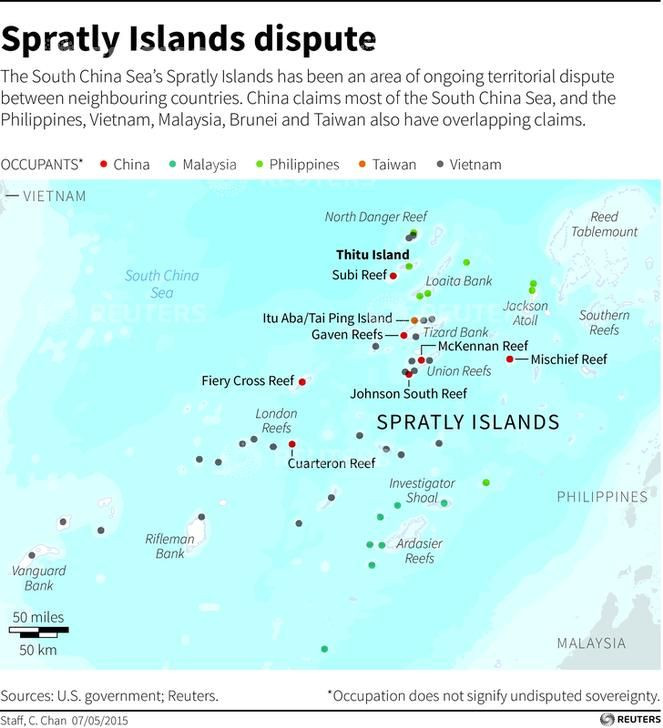China Ups The Ante In South China Sea, Giant Crane Vessel Spotted Inside Vietnam-Claimed Waters

China has once again provoked its southerly neighbors in the South China Sea by moving a huge crane vessel near the Vietnamese coast in an area that is within the Vietnamese exclusive economic zone (EEZ).
The vessel was tracked by Marine Traffic, a website where information on vessel movement can be found. The crane ship left the Chinese coastal city of Zhanjiang last month and arrived just 90 km off the shore of Quang Ngai, located in the middle of Vietnam’s lengthy eastern coastline facing the South China Sea.
Named the Lan Jing, the crane ship is thought to be the largest one in the world. It belongs to state-owned China National Offshore Oil Corporation (CNOOC) and sails under the Hong Kong flag. It has a 7,500-metric ton capacity crane, an additional 4,000-ton crane and an auxiliary 1,600-tonne hook. China has used it before in the South China Sea to install large oil rigs and other offshore structures.
CNOOC did not respond to inquiries about its intentions off the Vietnamese coast but most observers think Beijing’s ploy is to force Vietnam to spread its limited maritime capacities to their limit and to hamper Vietnam’s oil and gas exploration with their partner, a Russian petroleum company called Rosneft.
A Chinese survey ship named the Haiyang Dizhi 8 is currently deployed at the Vietnam-controlled Vanguard Reef in the Spratly Islands, another South China Sea hotspot.
Collin Koh, a research fellow at the S. Rajaratnam School of International Studies, based at Nanyang Technological University in Singapore, said, “Imagine Vietnam has to stretch its limited maritime forces capacity, not only in Vanguard Bank but also over Lan Jing. This could complicate the situation for Vietnam which already faces a yawning asymmetry with China in terms of maritime forces capacity. What China is doing could provoke a stronger domestic backlash within Vietnam, compelling the Vietnamese political elites to act, which may include allowing nationalistic sentiments to come into the picture as a counteraction to this new Chinese act.”
The South China Sea is a treasure trove of natural resources including oil and minerals and yields enough fish to feed millions of people. China has ignored a 2016 United Nations ruling granting sovereignty to the Philippines to waters in its EEZ and continues to provoke other countries in the region that have their own EEZs that conflict with Beijing’s claims.
There are signs that China will eventually face resistance from Japan plus all 10 ASEAN nations and the United States. They are all currently involved in a five-day joint naval exercise that began in Thailand and will end in Singapore.
© Copyright IBTimes 2024. All rights reserved.





















